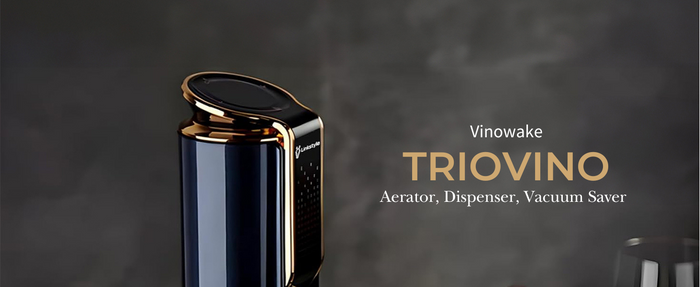Storing wine correctly is an essential aspect of wine appreciation that can dramatically affect its flavor and longevity. Enthusiasts and casual drinkers alike often ponder the best methods to keep their wine in optimal condition. While traditional methods call for horizontal storage, modern innovations like Triovino offer compelling alternatives that cater to contemporary lifestyles. Here's a comprehensive look at wine storage and how Triovino transforms the preservation of opened bottles.
Horizontal Storage: The Classic Approach

Traditionally, wine bottles are stored horizontally, especially when it comes to long-term aging. This orientation ensures the wine is in constant contact with the cork, preventing it from drying out. A moist cork maintains an airtight seal, which is crucial in keeping oxygen out and preserving the wine's integrity. This method is ideal for wines you plan to age over several years.
Vertical Storage: Convenience and Display

Vertical storage is typically reserved for short-term purposes or for wines with screw caps or synthetic corks. This position is often used for display, easy access, or immediate consumption. However, if a bottle with a natural cork is stored vertically for an extended period, the cork might dry out, risking oxidation and spoilage.
The Triovino Advantage: Transforming Wine Preservation
Innovative Vacuum Preservation
Triovino changes the game with its state-of-the-art vacuum preservation technology, which allows wine bottles to be stored vertically without compromising freshness. By maintaining a vacuum pressure of -50 kPa, Triovino effectively removes air from the bottle, minimizing oxidation and preserving the wine’s flavors and aromas for up to 10 days.

Why Vertical Storage Works with Triovino
With Triovino, wine enthusiasts can enjoy the convenience of vertical storage while ensuring the wine remains unaffected by air exposure. This technology keeps the protective qualities of the wine intact, allowing for a perfect balance between traditional storage wisdom and modern convenience.

Ideal for Modern Lifestyles
Triovino’s ability to maintain wine quality makes it perfect for those who enjoy savoring a bottle over several days. It’s particularly beneficial for small living spaces, where horizontal wine storage may not be practical. Its sleek design also makes it an attractive accessory for your home bar or kitchen.

Embrace the Future of Wine Storage
The art of wine storage is evolving, and Triovino represents a significant step forward. By combining the traditional security of vacuum preservation with the convenience of vertical storage, wine lovers can enjoy their favorite bottles at their own pace without sacrificing quality. Whether you’re hosting a dinner party or simply enjoying a quiet evening at home, Triovino ensures that every glass is as delectable as the first.
By understanding the nuances of wine storage and embracing innovative solutions like Triovino, you can enhance your wine experience and ensure that every sip is savored with confidence and sophistication.




















